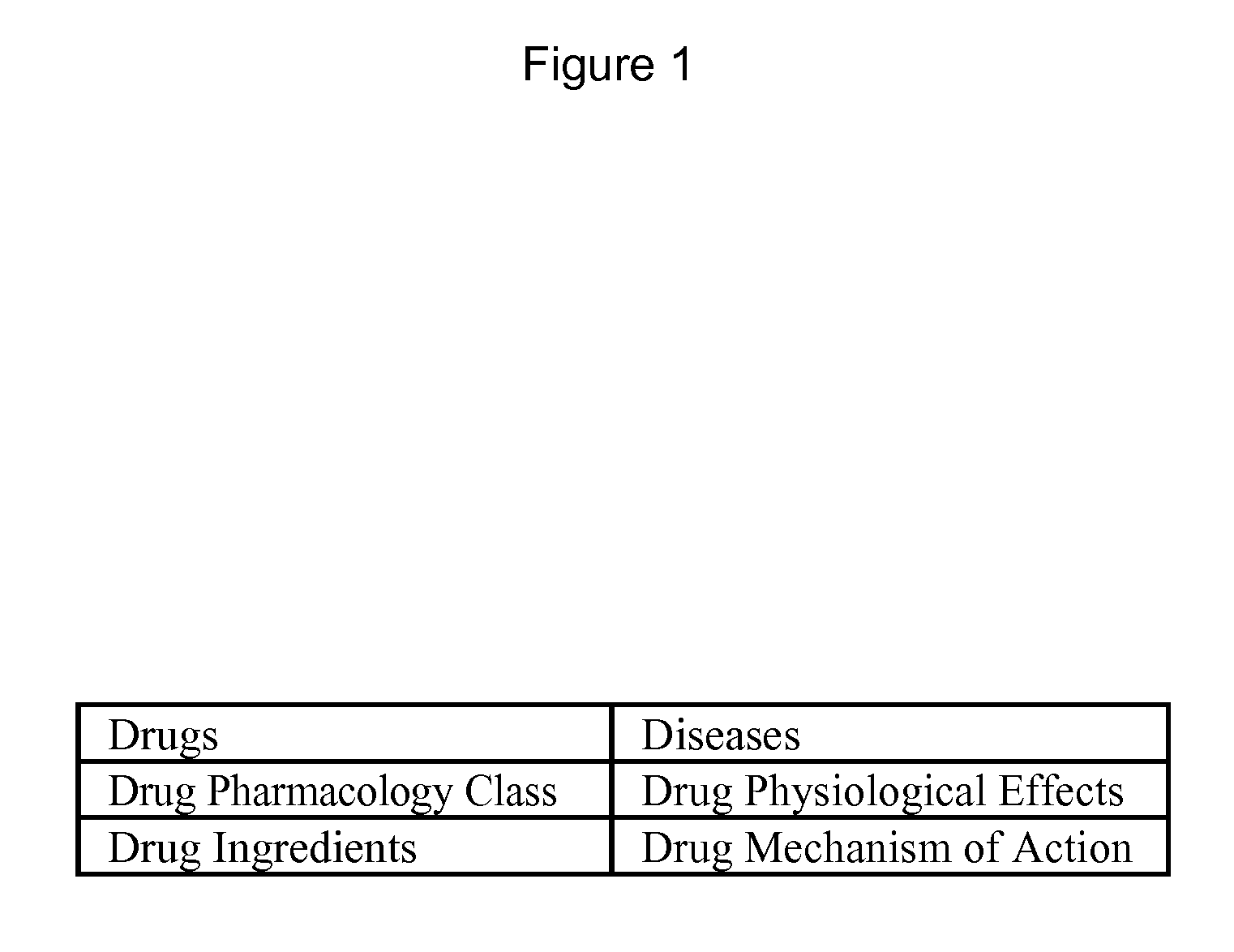System for Linking Medical Terms for a Medical Knowledge Base
a knowledge base and medical terminology technology, applied in the field of system for generating medical knowledge base information, can solve the problems of lack of wide coverage, and inability to link medical terms, and achieve the effect of high confiden
- Summary
- Abstract
- Description
- Claims
- Application Information
AI Technical Summary
Benefits of technology
Problems solved by technology
Method used
Image
Examples
Embodiment Construction
[0016]The system advantageously extends a knowledge base and improves its precision and recall. In one embodiment, the system employs large-scale text mining with user human interaction to reduce the time and effort for a human user encoder by automatically extracting relevant knowledge and presenting it to the user for selection. The system automatically discovers medical concepts that are related to a medical entity and determines the type of relationships potentially existing between an entity and discovered entities. This is achieved by mining for knowledge about medical concepts of interest in large (or other) sources of information. The system uses contextual, semantic information of multiple knowledge sources in determining relationships between medical entities. In one embodiment, the system automatically searches for an entity (term) in large unstructured databases, retrieves relevant sentences, recognizes other entities in these sentences, and uses knowledge within and out...
PUM
 Login to View More
Login to View More Abstract
Description
Claims
Application Information
 Login to View More
Login to View More - R&D
- Intellectual Property
- Life Sciences
- Materials
- Tech Scout
- Unparalleled Data Quality
- Higher Quality Content
- 60% Fewer Hallucinations
Browse by: Latest US Patents, China's latest patents, Technical Efficacy Thesaurus, Application Domain, Technology Topic, Popular Technical Reports.
© 2025 PatSnap. All rights reserved.Legal|Privacy policy|Modern Slavery Act Transparency Statement|Sitemap|About US| Contact US: help@patsnap.com



